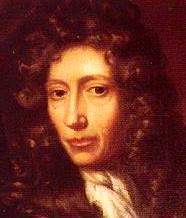Boyle temperature on:
[Wikipedia]
[Google]
[Amazon]
 The Boyle temperature is formally defined as the temperature for which the second
The Boyle temperature is formally defined as the temperature for which the second
 The Boyle temperature is formally defined as the temperature for which the second
The Boyle temperature is formally defined as the temperature for which the second virial coefficient
Virial coefficients B_i appear as coefficients in the virial expansion of the pressure of a many-particle system in powers of the density, providing systematic corrections to the ideal gas law. They are characteristic of the interaction potential ...
, , becomes zero.
It is at this temperature that the attractive forces and the repulsive forces acting on the gas particles balance out
This is the virial equation
In physics, chemistry, and thermodynamics, an equation of state is a thermodynamic equation relating state variables, which describe the state of matter under a given set of physical conditions, such as pressure, volume, temperature, or internal ...
of state and describes a real gas
Real gases are nonideal gases whose molecules occupy space and have interactions; consequently, they do not adhere to the ideal gas law.
To understand the behaviour of real gases, the following must be taken into account:
*compressibility effects ...
.
Since higher order virial coefficients are generally much smaller than the second coefficient, the gas tends to behave as an ideal gas
An ideal gas is a theoretical gas composed of many randomly moving point particles that are not subject to interparticle interactions. The ideal gas concept is useful because it obeys the ideal gas law, a simplified equation of state, and is a ...
over a wider range of pressures when the temperature reaches the Boyle temperature (or when or are minimized).
In any case, when the pressures are low, the second virial coefficient
Virial coefficients B_i appear as coefficients in the virial expansion of the pressure of a many-particle system in powers of the density, providing systematic corrections to the ideal gas law. They are characteristic of the interaction potential ...
will be the only relevant one because the remaining concern terms of higher order on the pressure. Also at Boyle temperature the dip in a PV diagram tends to a straight line over a period of pressure. We then have
:
where is the compressibility factor
In thermodynamics, the compressibility factor (Z), also known as the compression factor or the gas deviation factor, describes the deviation of a real gas from ideal gas behaviour. It is simply defined as the ratio of the molar volume of a gas to ...
.
Expanding the van der Waals equation
In chemistry and thermodynamics, the Van der Waals equation (or Van der Waals equation of state) is an equation of state which extends the ideal gas law to include the effects of interaction between molecules of a gas, as well as accounting for ...
in one finds that .{{cbignore
See also
* Virial equation of state Temperature ThermodynamicsReferences